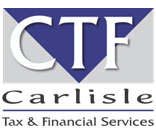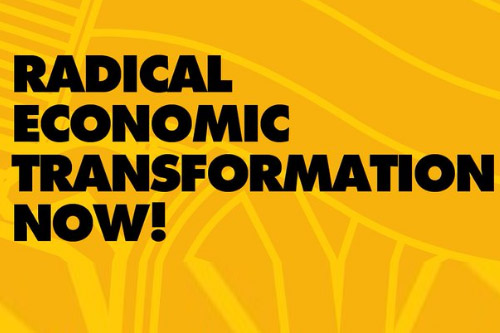On 24 October 2022, the Supreme Court of Appeal (‘SCA’) delivered its judgment in the matter of Mobile Telephone Networks (Pty) Ltd v Commissioner for the South African Revenue Service (805/2021) [2022] ZASCA 142. The SCA held that the declaratory relief MTN sought in the High Court and the SCA in respect of the VAT treatment of its prepaid airtime vouchers was not appropriate, and that the High Court incorrectly entertained the declaratory application.
In brief
The matter between Mobile Telephone Networks (Pty) Ltd (‘MTN’) and the Commissioner for the South African Revenue Service (‘CSARS’) was heard in the Gauteng High Court as the court of first instance on 12 January 2021. The Gauteng High Court dismissed the case with costs in favour of the CSARS. The matter was then brought on appeal to the SCA on 9 September 2022.
The SCA dismissed MTN’s appeal with costs of two counsel on a procedural basis.
Background
MTN offers multi-purpose prepaid vouchers to customers which are also termed ‘airtime’ vouchers. The airtime vouchers allow the holder to access any of the products or services available through MTN’s network up to the value stated on the voucher.
MTN’s administrative approach to the voucher is understood to be as follows. When an airtime voucher is purchased and activated, MTN credits a sum of money equal to the face value of the voucher to a ledger account linked to the account holder’s SIM card. This storage of money is referred to as a ‘main wallet’, which can be used to access the various products and services. When the holder accesses the selected product or service, the applicable cost, based on the prevailing tariff, is deducted from the main wallet.
In November 2017 MTN applied to SARS for a binding private ruling to confirm that its multi-purpose ‘airtime’ vouchers fall within the ambit of section 10(18). Historically, these vouchers were treated as being subject to section 10(19). However, SARS issued a ruling determining and confirming that the airtime vouchers fall within the ambit of section 10(19).
Unhappy with the ruling’s outcome, and seeking interpretational clarity on the law, MTN sought a declaratory order from the High Court confirming its view. The High Court entertained the application but did not find in favour of MTN’s request and agreed with SARS’ position. MTN, consequently, lodged an appeal to the SCA.
Law
Section 10(18) deals with the right of the holder to receive unspecified goods or services to the extent of the monetary value stated on any voucher. The goods or services to which the holder may apply the voucher are not specified on the voucher, but a monetary value is specified. In this instance, the supply of the voucher is disregarded for VAT purposes, which means that the sale of the voucher does not trigger a VAT liability (except and to the extent that the voucher is purchased for a sum exceeding its face value). Therefore, the vendor issuing a monetary voucher is required to charge and account for output tax only when and to the extent that the voucher is redeemed for goods or services. Based on the Explanatory Memorandum on the Value-Added Tax Bill, 1991 (‘Explanatory Memorandum’), section 10(18) vouchers are regarded as a means of exchange, similar to money. A standard retail gift voucher or ‘mall voucher’ typically falls into this category.
In contrast to this, section 10(19) deals with vouchers that specify the goods or services that the holder is entitled to receive upon redemption of the voucher. In this case, since the goods or services that will be supplied upon redemption are known at the time the voucher is issued, the applicable VAT rate is determinable and, consequently, VAT is levied on the sale of the voucher. When the voucher is subsequently redeemed for the specified goods or services, the vendor does not have any further VAT liability, as the value attributable to the latter supply is regarded as nil.
The main difference between the two VAT provisions is therefore the timing of the VAT liability.
Judgments
In the High Court, Hughes J agreed with MTN’s reliance on the case of CSARS v Langholm Farms (Pty) Limited (Langholm Farms case), highlighting that nothing would change SARS’ interpretation of the specific section of the VAT Act and that no amount of further facts or information would alter SARS’ legal view. As such, the declaratory application was deemed appropriate by the court.
In relation to the VAT treatment of the airtime vouchers, the High Court acknowledged that the airtime vouchers could be used to make and receive calls, send messages, and use the internet and data. However, Hughes J took the view that this does not change the nature of the voucher. That is, they were redeemable for specified goods or services.
In essence, the High Court found that an airtime voucher is not akin to a gift voucher, which is a means of payment for goods or services (that is, a monetary voucher), but is rather a voucher that specifies goods or services as envisaged in section 10(19) – this being airtime.
SCA judgment
The SCA noted that the appeal related to two issues, namely:
- Whether seeking a declaratory order was appropriate in the circumstances; and
- If so, whether the SARS ruling was incorrect.
The SCA primarily dealt with the issue as to whether declaratory relief was the correct and competent process to follow and not with the real VAT issue of whether the vouchers ought to be treated under section 10(18). SARS contended that the declaratory application was not the correct procedure and that the correct course of action was –
- For MTN to have submitted a return in which it treated the vouchers as falling under section 10(18); and
- For SARS to have presumably rejected the return and issued an assessment, to which MTN could have objected and followed the “special machinery created under the TAA for such disputes between SARS and taxpayers.”
As a defence against this assertion, MTN contended that its application was not an objection but rather “a legitimate approach to the high court for a declaration of rights.” In MTN’s view, its situation aligned with the circumstances described in the Langholm Farms case, which supported its approach to the High Court instead of following the normal TAA process.
In the SCA’s view, there is a clear distinction between sections 10(18) and 10(19) in the Act and that it is a factual inquiry as to whether the prepaid vouchers fall into one category or the other.
It was furthermore submitted by SARS that the factual position as to “how the vouchers are purchased, what information is provided to customers and the manner in which the vouchers are actually used” was far from clear, citing examples of MTN’s terms and conditions. SARS alleged that it wasn’t clear on what the term ‘airtime’ connoted, and SARS submitted that the terms and conditions supported its view. In paragraph 20 of the judgment, SARS submitted that ‘the factual position was far from clear’ and that ‘MTN dealt with the application largely in the abstract’ and that ‘it had not put up sufficient or clear facts to allow the court to finally determine the entitlement of MTN to apply section 10(18)…’.
The SCA referred to various previous cases where declaratory relief was sought. It was evident in these cases that there were clear, uncontested facts and no further factual information was necessary to resolve the legal issue in such cases. The SCA concluded that declaratory relief in tax matters is only to be entertained in limited circumstances and where there are clear, uncontested facts. In addition to uncontested facts, the SCA mentioned that other factors can also weigh in on such decisions, the main concern of which is opening ‘floodgates for applications to court where certainty is sought from the court prior to applying a new strategy’.
In conclusion, the SCA held that the High Court erred in its decision that the matter was ripe for declaratory relief and that the declaratory relief was not appropriate.
Analysis and our view
Unclear facts
request more information if this is necessary for it to express its opinion or views on the question addressed to them, which opportunity we expect SARS made use of. The VAT Rulings Process Reference Guide (Issue 3) dated 4 November 2021 also indicates that SARS will hold a consultation with the taxpayer if a negative ruling will be issued which allows the taxpayer to clarify any facts. This process in itself provides ample opportunity for SARS to ensure that the facts of the matter and transaction are clearly understood.
If SARS was unable to determine and clearly understand the facts on which MTN based its ruling request, it could have rejected the ruling application or asked for information until it was satisfied that the transaction and background were understood and clear.
From the information in the judgments, SARS accepted that it had sufficient information to express an opinion on the applicability of section 10(18) to the facts as it issued an interpretive ruling to MTN. This ruling was what is generally referred to as a ‘negative’ ruling and after receiving the negative ruling on the issue, MTN approached the High Court for a declaratory order.
The High Court then entertained the relief sought. In paragraph 27 of its judgment, it also indicates that SARS actually ruled on the matter and expressed its views. In paragraph 28 the court further indicated that no further facts would change SARS’ interpretation or legal view.
Having regard to the above, it is disappointing that the SCA saw “considerable merit” in SARS’ submissions that there was a lack of clarity, especially having regard to the fact that SARS was comfortable to have previously expressed an opinion together with the High Court seeing fit to decide on the matter.
The functioning of the vouchers also appeared to be explained in an understandable format in the judgment, as MTN puts it “as common cause”. These details would presumably have also been set out in the ruling application to SARS and clarified by SARS to ensure a proper enough understanding in order to express a legal view, before it did so.
It is not clear where between being able to rule on the matter (and express a legal opinion) versus being able to consider the matter in the court application, the facts became unclear.
Notwithstanding the above uncertainty, Gorven JJA remarked that counsel experienced considerable difficulty in obtaining clarity on the nature of airtime and how the vouchers function in practice, as well as whether the services offered were specified by usage or arrangement (as envisaged in section 10(19)). To the court, these aspects were “distinctly opaque” and the court submitted that “this is not a matter where there is a set of clear, sufficient, uncontested facts.”
MTN’s airtime voucher
In paragraph 26, the court acknowledged that MTN “put up some nine pages listing the services offered by it” which SARS contended showed that the voucher belonged under section 10(19) as it entitles the holder to specified goods or services. This statement causes difficulties when considering the practical application of the matter which we unpack further below.
The reality in this case is that MTN offers an extensive and ever-expanding service offering to its customers and in our view this ought to have been considered with more weighting.
The vouchers in question issued by MTN, as was stated in the judgment, entitle the holder to an array of services for which they can be redeemed. The case made mention of a list of 9 pages of services, and further acknowledges that the list of services continues to develop and expand.
On issuing the voucher, MTN would never know the specific goods or services the holder will redeem using the voucher, as this decision will only be made by the consumer on redemption.
Furthermore, this list of services (which SARS contended indicates that the prepaid airtime voucher is a voucher entitling a holder to specific goods or services) may include standard rated goods or services, zero-rated services and/or exempt services.
Section 10(18) is a mechanism in the VAT Act for vendors to apply the correct tax rate to their supplies by postponing the VAT liability to when the voucher is redeemed and the taxable nature of those goods or services is known.
This is important as a voucher could entitle a holder to zero-rated supplies (e.g. roaming bundles) or exempt supplies (e.g. funeral policies), or standard rated supplies (e.g. subscription services).
To draw a comparison, if a customer purchases, as an example, a grocery voucher, which entitles it to a list of all the groceries supplied by the grocer (standard and zero-rated groceries), does it mean that this voucher must be treated under section 10(19), despite the vendor having no knowledge as to the specific goods or services the voucher may eventually be redeemed for?
This is certainly not the purpose of section 10(19). Every vendor (supplier) has a list of goods or services that it could possibly supply but that is not the fundamental principle that renders a voucher one that entitles the consumer to specific goods or services. The important principle is the correct tax treatment of the product to be supplied, that is, if the product is unknown at the time of supplying the voucher, the correct VAT rate cannot be determined and therefore a deferral of the payment of VAT on the redemption of the voucher.
The outcome of this judgment fundamentally impacts all section 10(18) vouchers and suggests that section 10(18) will not apply if a voucher can be redeemed for a specified or predetermined list of goods or services.
SARS Draft Interpretation Note
The SARS Draft Interpretation Note on the VAT treatment of vouchers states that the voucher envisaged under section 10(18) is for unspecified goods or services. It goes further to confirm that the reason for section 10(18) is that the nature of the goods or services to be supplied when redeemed is not known when selling the voucher.
Importantly, the tax rate that will apply to the supply cannot be determined at that point, and it is in light of this that the vouchers are disregarded on issue thereof and the output tax is accounted for on the supply of the goods or services on redemption.
This aligns exactly with the matter that was before the court. The explanations given by SARS in the Draft Interpretation Note cannot result in a voucher being regarded to be for specified goods or services merely because the vendor is able to list all of the goods or services that it possibly supplies.
It goes further than this — the tax rate that may apply on redemption is unknown because, notwithstanding the vendor only having a list of, say, ten products that it sells, such products may either be taxable or non-taxable.
SARS goes further to state under paragraph 4.3 of the Draft Interpretation Note that section 10(19) vouchers are accounted for upfront as ‘the vendor is able to establish the nature of the goods or services to be supplied and the applicable VAT rate.’
In addition, in paragraph 4.6 of the Draft Interpretation Note, SARS acknowledges that monetary vouchers can be issued for redemption at a third party .SARS regards these vouchers as non-specific vouchers falling under section 10(18), and uses the example of a mall voucher to be redeemed at any retailer in the mall. In our view, a prepaid airtime voucher is no different from this — it also entitles the holder to redeem it for a supply by a third party.
Regarding the airtime vouchers as not falling under section 10(18) therefore results in the incorrect VAT collection process on the transaction, that is, VAT is collected at the standard rate on both the issuing of the voucher as well as on the supply of standard rated goods or services by the third-party supplier when the voucher is redeemed.
International norms
The Australian GSTR 2003/52 refers to a voucher that can be used only to make telephone calls as a ‘single function voucher’ (which in our view would be similar to what we consider to be a section 10(19)). In Canada it appears that gift cards and gift certificates are not taxable on the sale thereof but GST will be due on the price of the goods/services purchased.3 In addition, in the European Union (‘EU’),4 a multi-purpose voucher is one that entitles the holder to receive goods/services where it is not sufficiently identified and as a result VAT cannot be determined with certainty at the time the voucher is issued. As example a prepaid credit voucher is listed which could be used to purchase telecommunications services or public transport (which has a different, reduced rate). As such, VAT can only be accounted for when the vouchers are redeemed.
Having regard to this, it is clear that the main purpose for the postponement of the VAT event when it comes to vouchers, is the uncertainty regarding the correct VAT treatment. This reiterates the reason why a prepaid airtime voucher, in our view, should fall under section 10(18).
Conclusion
Due to the outcome of the SCA judgment, there is no change in the manner in which these vouchers have historically been treated for VAT purposes. However, with the continuous evolving nature of business and the industry, this position will cause many practical difficulties.
In the current environment, VAT is accounted for upfront on the issuing of the voucher. In instances where the holder of the voucher subsequently uses it to acquire, for example, a funeral policy which is an exempt supply it will result in VAT being collected on an exempt supply. Suppliers of the voucher cannot even apply the provisions of section 21 to issue a credit note to effectively reverse the VAT originally paid as none of the listed circumstances apply. This outcome goes against the construct and purpose of the VAT Act.
In other instances, the holder of the voucher could redeem the voucher to pay for content streaming services provided by a third-party service provider. In these circumstances, the service provider and MTN will account for VAT at the standard rate resulting in VAT being collected twice.
The practicality around these issues, as well as resolving them, is substantial if not treated under section 10(18) of the VAT Act. A definite answer/certainty on this is definitely required to ensure a correct application of VAT.
Souce: PWC




